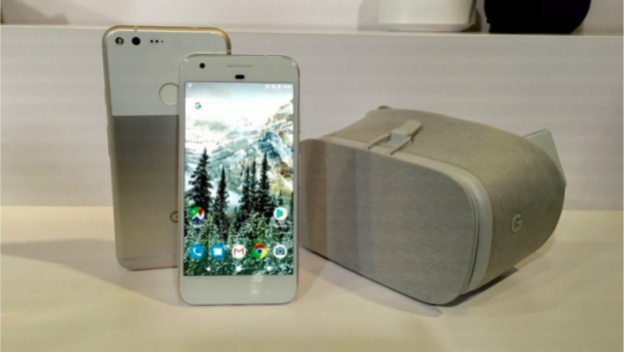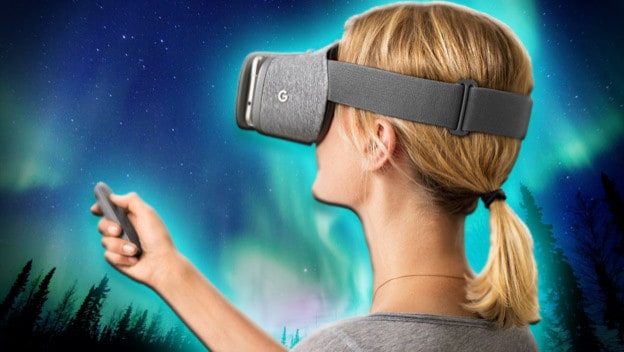Introducing Google’s Daydream View! This is Google’s latest VR headset and frankly, it is worth noting in the VR world. Compared to the HTC Vive, PSVR, Oculus Rift, and Samsung Gear, the Daydream might be the best combination of quality and value. It may be a smartphone headset, but unlike the Gear VR, the work for the Daydream isn’t divided between the headset and the phone. The phone, in this case, is the Google Pixel. Though it is important to point out that Google is working on making sure that other Android phones are compatible (instead of it being exclusive to a particular phone like Gear VR).
The Pixel is doing everything and it shows – the battery life is drained after an hour or two (depending on level of activity). Google’s Pixel, as stated by VR engineering director Relja Markovic, “basically detects the viewer using [near field communication]. So that’s the core signal that says ‘oh, OK, I should be thinking about going into VR now.’” In addition to this, there are two sensors on the headset that the phone detects in order to align the image properly depending on how the phone is resting inside the viewer. I think that’s tech-speak for “there’s wiggle room”, so if you don’t put the phone in super straight, it will still work just fine.
The controller is made specifically for the Daydream; there is no option for a standard Bluetooth controller. I suppose this makes a kind of sense, as all VR technology seems to require its very own controller. It is quite a simple one at that, with only a home, re-centre, and volume buttons. There is also a large middle button, that serves as both a touchpad and a button. The purpose of this is left up to the developers of a given program or game. The controller is also motion-tracked and works a lot like the Wii remote.
Though this controller is simple, there is no less room for creativity. Just as developers have with mobile phone games, they can be quite innovative with the Daydream. In VR Karts: Sprint , for example, you use the controller to turn corners by literally tilting it and pressing another button for the throttle. This is akin to tilting your phone to steer in a racing game, but in VR the experience is a lot more immersive. Even if it is just a Mario Kart clone.

360-degree YouTube videos and panorama photos are also features of the Daydream. They are quite well executed, but don’t seem to hold much interest for those who have reviewed the product. More content is of course on the way for the Daydream.
With all of that noted, I’d like to mention the $79 USD price point is pretty sweet. I believe that makes the Daydream the cheapest VR headset out there. Which is great, because not everyone has the required phone and will probably need to buy that too. In addition, the Daydream is extremely lightweight and requires no other set-up than the high-end phone. Since most people are on plans that can make the phone either free or fairly cheap, it’s entirely possible that there are no additional costs to operating this VR, unlike the high-end sets.
Google’s Daydream View VR will definitely be in direct competition with the other VR technology out there. Its price, possible compatibility with other phones, and significant lack of wires or heavy attachments put it above and beyond the others for people looking to dip their toes into the new technology. No need for a high-end PC, console, or major set-up – just plug-in your phone and go. The Daydream View VR is something to watch out for in the future. It’s gonna be big.
